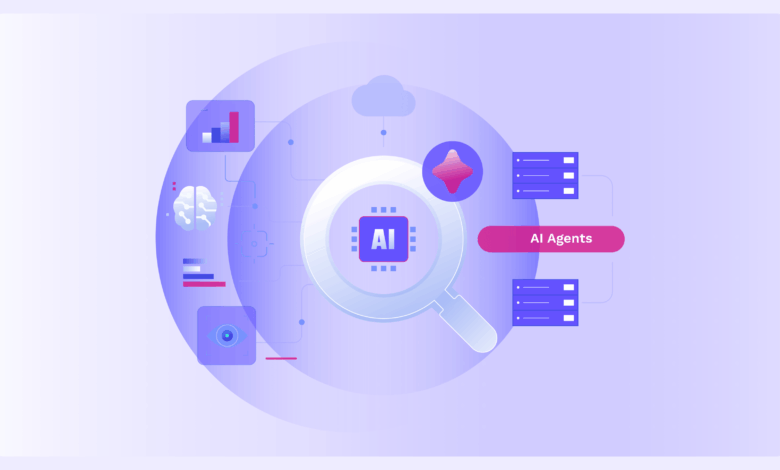
As Generative AI (GenAI) and hyper-automation gain traction, Chief Data and Analytics Officers (CDAOs) are navigating a high-stakes transition. What began as a push to automate routine data tasks is now evolving into a strategic mandate: build intelligent, agentic systems that augment human decision-making—without losing control or compromising governance.
Across industries, the volume and complexity of enterprise data is still growing fast. IDC predicts that by 2025, global data will grow to 175 zettabytes. Meanwhile, Gartner estimates that by 2026, over 75% of organizations will operationalize AI—up from just 10% in 2020. This isn’t just about scaling faster. It’s about transforming how data-driven decisions are made across every function.
For CDAOs, the future isn’t just automation. It’s orchestration: seamlessly integrating AI agents, governance, context, and knowledge across an enterprise data fabric. To succeed, they must move from simply managing workflows to designing intelligent systems that act autonomously—while ensuring those systems remain accurate, explainable, and aligned with business objectives.
From Automation to Agentic Intelligence
Essential automation—automating ETL pipelines, standardizing dashboards, tagging metadata—is no longer enough. These are table stakes. These tools help organizations “keep up,” but they don’t unlock true competitive advantage.
The next frontier is agentic intelligence: autonomous systems that reason, plan, and act based on dynamic inputs and evolving objectives. Agentic functionality goes well beyond pushing data from A to B—agents evaluate business context, draw from institutional knowledge, and surface insights tuned to real-time decisions. Whether surfacing risks in financial forecasts, flagging anomalies in tax exposure, or optimizing operational strategies, agentic AI shifts the role of data teams from reactive to proactive.
Yet, with greater intelligence comes greater risk. As AI agents begin to act with more autonomy, CDAOs must architect strong guardrails. Explainability, data lineage, policy enforcement, and auditability must remain central. This balance—intelligence with integrity—is the new mandate for mature data organizations.
The CDAO’s New Playbook
To lead in this next phase, forward-thinking CDAOs are retooling their playbooks around five core principles:
- Shift from Dashboards to Decisions:
Data teams must stop flooding business users with dashboards and start delivering decision-ready recommendations. AI agents can triage, prioritize, and personalize outputs at scale. - Systematize Knowledge, Not Just Data:
It’s no longer enough to integrate and normalize data. Leading organizations are encoding domain knowledge into systems—business rules, taxonomies, process logic—so AI agents can reason like subject matter experts. - Embed Governance as Code:
As agents proliferate, centralized oversight doesn’t scale. Instead, governance must be codified—embedded into data flows, policy engines, and model ops pipelines. - Design for Agentic Workflows:
Intelligent agents need context-rich environments. That means stitching together APIs, process maps, and decision trees into ecosystems where agents can act, not just analyze. - Elevate Data Teams from Service to Strategy:
CDAOs must reframe their teams as strategic enablers—not report generators. That means owning the automation roadmap, defining intelligent agent use cases, and driving transformation together with business units.
A Foundation for Agentic Systems
As enterprises adopt agentic AI, the supporting infrastructure must evolve to meet new demands – namely, the ability to embed context, governance, and institutional knowledge into workflows. This requires key orchestration.
An emerging model that’s enabling this shift is the use of semantic knowledge layers, such as enterprise knowledge graphs, to guide agentic workflows with shared understanding and traceable logic.
Contextual Intelligence: The Role of Intelligence Graphs
Traditional automation platforms struggle with nuance. They move data efficiently but can’t interpret business context. An advanced intelligence graph changes that by acting as a semantic backbone—mapping relationships between entities, metrics, definitions, processes, and users across the enterprise. Think of it as a living blueprint of how your organization thinks and operates. Intelligence graphs build upon the foundation of knowledge graphs by integrating intelligent agents or capabilities that enable real-time, dynamic reasoning and analysis.
Here’s what makes it powerful:
Contextual Intelligence
AI agents powered by an intelligence graph go a step further than data retrieval to truly understand its meaning. “Revenue” isn’t just a column—it’s tied to product hierarchies, regional roll-ups, and fiscal policies.
Reusability and Scale
Once encoded, knowledge doesn’t have to be rebuilt for every new query or workflow. Agents can tap into a shared institutional brain, making them smarter, faster, and more reliable.
Dynamic Governance
Intelligence graphs support lineage tracking, version control, and permissioning across all analytics assets—ensuring every insight is traceable, auditable, and policy-compliant. Just as data is separated by team or role, the intelligence is federated – agents only access what’s authorized within specific workspaces.
Collaboration-First Design
By aligning technical and business users through a unified vocabulary, intelligence graphs help ensure clarity, reduce ambiguity, and build trust in AI-generated outcomes.
Real-World Impact: From Manual Mayhem to Intelligent Flow
Agentic systems are helping organizations escape the trap of fragmented spreadsheets, tribal knowledge, and inconsistent definitions. With the power of AI agents:
- Finance teams can automate variance analysis with agents that understand cost centers, time periods, and internal benchmarks.
- Tax teams can flag anomalies in jurisdictional exposure or intercompany pricing—without combing through dense reports.
- Strategy leaders can ask open-ended questions and receive agent-driven answers, supported by traceable logic.
This is the shift: from tactical automation to strategic enablement. From linear workflows to agentic ecosystems. From static reports to living intelligence.
Where CDAOS Go From Here
As organizations scale their AI efforts, the pressure on CDAOs is clear: deliver smarter systems without sacrificing control.
Agentic intelligence doesn’t mean relinquishing oversight. It means codifying it—so that your AI acts not just autonomously, but accountably.
The winners in this next wave won’t be the ones who automated first. They’ll be the ones who automate wisely, layering intelligence, governance, and agility into the very foundation of how decisions are made.
CDAOs who seize this moment have a rare opportunity: a chance to reposition the data function from support role to strategic command center for the entire business.
The future isn’t just automated. It’s agentic, intelligent, and trusted.





